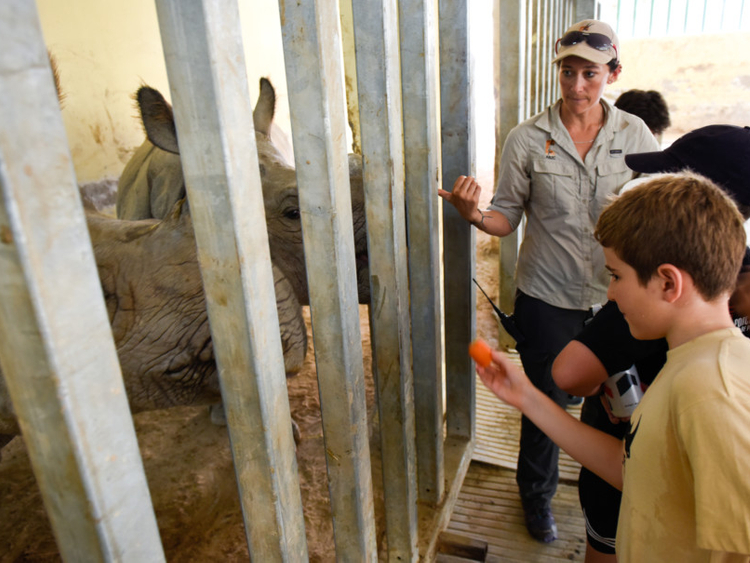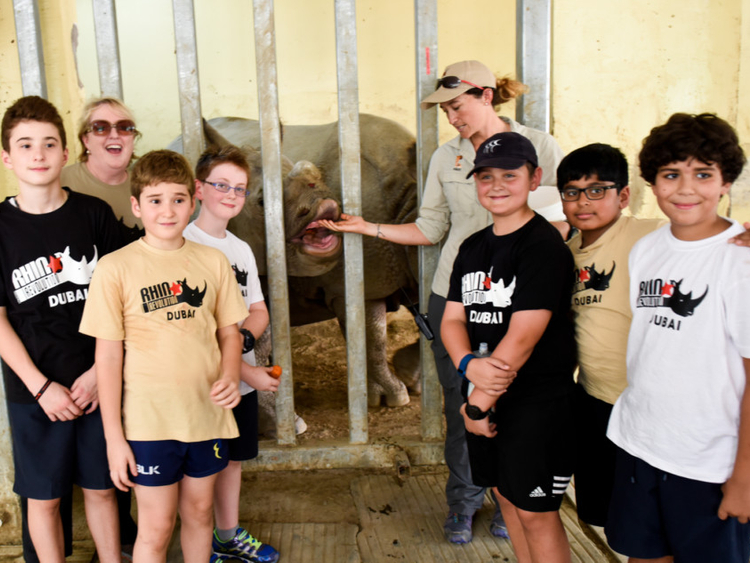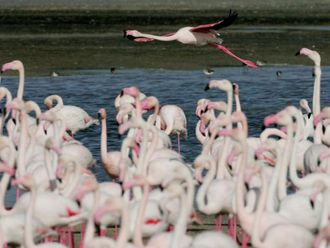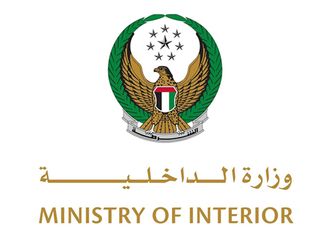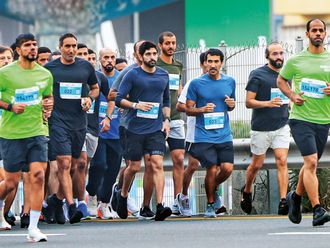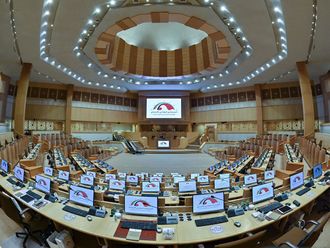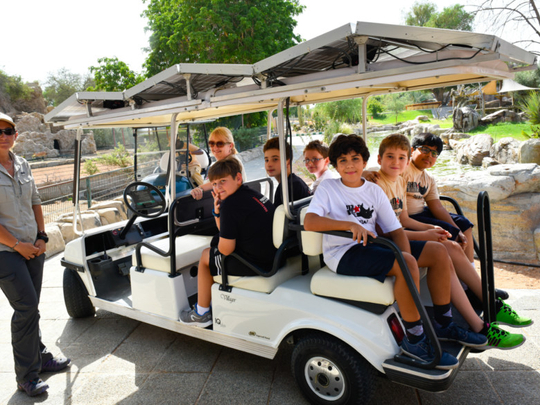
Sharjah: UAE pupils who swam 5km in a school challenge and campaigned to save rhinos from poachers were given a chance to see and feed rhinos in person on Sunday, also World Environment Day.
Noyan Bilgutay, 12, and his brother Emre, 10; Zachary Grigsby, 11; and Mustafa Abbas, 11, altogether covered 5km in a swimathon challenge in order to raise awareness about the dangers rhinos face in the wild.
Scott Campbell, 10, Andre Joubert, 11, and Olivier Magermans, also took part in educating their schoolmates about how poachers are driving rhino population to extinction.
“Whether you’re big or small, you can help rhinos or any other animals. Even if we’re just kids, we swam 5km and that’s to help the rhinos. So, even if you’re any age you can make a difference,” Noyan said.
The Ajman Academy and Uptown School-Mirdif pupils were rewarded with an exclusive visit and interaction with not one but three Greater one-horned rhinos or Indian rhinos (Rhinoceros unicornis) at the privately owned Al Bustan Zoological Centre in Sharjah.
The pupils got to meet and feed Thulie, a 32-month old Indian rhino, believed to be the first Indian rhino born in the Middle East in 2013. His birth came as a glimmer of hope for the Indian rhino population, which was estimated to be less than 4,000 as of 2013. The pupils also met Asha, Thulie’s mom, and Girjah, Asha’s mate.
Their cousins, the African rhinos in South Africa, are being massacred for their horns across Africa. In 2015 alone, poachers killed 1,338 rhinos — that’s roughly four rhinos killed in a day. Since 2008, poachers have killed at least 5,940 rhinos, according to Save The Rhino International.
“Rhinos are actually dying faster than they’re being born which is, if you look at it, really, really scary,” Kate Burns, assistant manager and veterinary nurse at Al Bustan Zoological Centre, told Gulf News.
Burns lauded the pupils for their efforts in raising awareness among their schoolmates about the importance of rhino conservation.
“These guys have done all these campaigns out of their own will, out of their own passion and I think it’s really important that we reward an attitude like that,” Burns said.
During the visit, Joubert said their project was more than just a school activity. For him, saving a rhino is like saving a soul.
“I think it would be unfair for us just to let them die out quickly. It’s like helping a human to stay alive, you wouldn’t just let him die,” Joubert said.
“Even if they eventually go extinct, at least we tried something and at least we can say to the future generations, if it was to go extinct, that we at least tried to help and we did keep them for much longer.”
As part of the initiative, the schools will donate a boomer ball and infrared lamps to keep rhino calves warm at an orphanage being put up by the non-profit organisation Rhino Revolution South Africa, Patsy Stagman, International Development Manager at Rhino Revolution, said.
“It’s very very important that we engage children all over the world in rhino conservation efforts because rhinos are a global inheritance; they’re not just for Africa or India or Nepal,” Stagman said.
Rhino species Population
White rhino Between 19,682 and 21,077
Black rhino Between 5,042 and 5,455
Greater one-horned rhino 3,500+
Sumatran rhino Less than 100
Javan rhino 58-61
Source: Save The Rhino International


